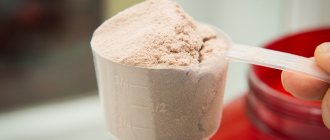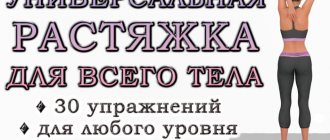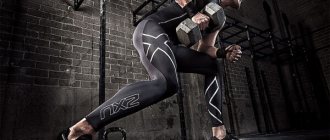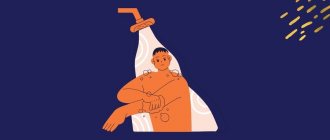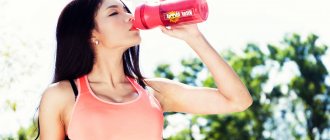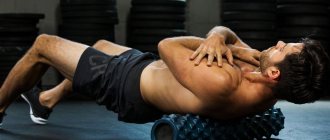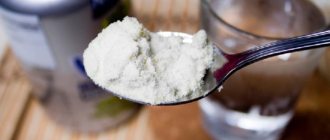Physical activity, a healthy lifestyle, a fit, beautiful body are what make us confident in the future. Millions of people spend time in gyms, watch their diet and lose excess weight: fitness has not just become a fashionable fad for many, but has turned into an urgent need, making it possible to make their lives full and energetic.
What is fitness
So what is this popular phenomenon and what are they doing in fitness? The word comes from the English verb to fit - keep yourself in shape, be healthy. However, to constantly be in good shape, physical activity alone is not enough - you need exercise, giving up bad habits, proper rest and a healthy diet - this is the basis of the concept.
Fitness is not just physical education or physical activity, it is a whole philosophy of existence that organically combines sports, an active lifestyle, proper nutrition and healthy optimism. This is the fruit of many years of practical experience of specialists, which is embodied in special training programs designed to strengthen health and spirit. The main goal of fitness is not to achieve sports performance, but to make a person’s life full, joyful and healthy, to teach him to conquer new horizons.
Important! Fitness should be distinguished from shaping, which was invented in the 80s in the USSR and includes, in addition to training, a specific nutritional system that promotes weight loss.
Endurance development
Probably everyone has encountered a situation when the elevator does not work and you have to climb to a high floor on foot. Or when you are late and see that your bus is already at the stop, you start making a dash for luck. What are the next consequences? Rapid heartbeat and shortness of breath? That's right. If you want your heart to restore its original heart rate in a short time, endurance training will help you (for examples of such training, see the corresponding section).
From the history of fitness
In fact, even our distant primitive ancestors were engaged in fitness, without realizing it: physical activity helped the ancients survive. And in Ancient Greece, there was generally a cult of a beautiful body with a healthy spirit contained in it: the foundations of the harmonious development of personality were laid precisely in the ancient era, and great minds were also involved in this - Aristotle, Hippocrates, Plato. During the Olympic Games, wars ceased, which indicates the deep admiration of the Greeks for sports competitions.
This is interesting! Fitness classes accompanied by music began in Ancient Greece: even then it was noticed that gymnastic exercises accompanied by music were more effective.
And in Ancient India, the philosophy of harmonious development of body and soul was embodied in yoga, which was popular in the third millennium.
Although the term fitness itself appeared in the United States in the 70s of the 20th century, the first specialized programs were developed to train American soldiers during World War II. Active work continued to introduce the new system at the end of the 20th century, when the US government became seriously concerned about the health of its citizens. A special Fitness Council was created under the President, which, in addition to politicians, included the best trainers and sports professionals, psychologists and medical specialists. The Council was tasked with popularizing a healthy and active lifestyle and physical development. And already in the late 80s, fitness gained such popularity that all segments of the population began to engage in it - from workers to millionaires. And in the post-Soviet space, the foundations of fitness were laid thanks to mass physical education events and a developed network of sports sections.
Today, free sections are a thing of history, but a network of modern fitness clubs, which once appeared in the United States as part of the fight for the health of the nation, is growing. And the number of fitness fans has quadrupled over the past decades!
Good to know! Many people, especially business people, were skeptical about the opening of the first domestic fitness clubs: in the 90s, serious explanatory work was carried out. The founders had to convince people of the benefits of classes and teach them to exercise correctly. And only the first serious results convinced the skeptics and served to widely popularize the direction.
A long and healthy life awaits you
You can extend your life. With age, if you do not exercise, the number of fast-twitch fibers decreases by 50%, and the number of slow-twitch fibers by 25%. Let me explain briefly - in general, there are two main types of muscle fibers in our body. There are fast fibers - they are mainly used when we perform work with maximum effort (example - a sharp rise from a chair, if we take sports - sprinting distances) And there are slow muscle fibers - they are turned on when we perform moderate work for a long time without a break (example – holding the package to your hand while leaving the store, regarding sports – marathon distances) Have you figured it out a little? In general, as we age, atrophy (loss) of fast muscle fibers occurs to a greater extent - this is why we see how it is difficult for an elderly person to get up from a chair. But thanks to training, in old age you will be faster and more active than your peers. Who doesn't dream of a dignified old age?
What are the benefits of fitness?
Fitness is a philosophy that needs to find a place in your life, because being passionate about it results in many advantages and benefits. What benefits does fitness bring to a person?
- Improvement of the body: normalization of metabolism, digestion, strengthening of the cardiovascular, skeletal, muscular systems, increased immunity;
- slim, fit figure, beautiful body;
- development of coordination of movements, formation of correct posture and gait;
- prevention of osteoporosis, thrombosis;
- reducing stress effects on the body, reducing nervous tension;
- improvement of general well-being, increased strength, vigor, increased performance;
- developing an active life position.
This is interesting. According to research, seven minutes of exercise can normalize blood sugar levels.
Thanks to fitness classes, you will become more resilient, stronger, and more flexible. Everything together contributes to the development of self-confidence and stimulates one to conquer new heights. A person strives to realize himself as fully as possible, which means he becomes more successful.
Basic types of fitness
There are many areas in fitness, each of which represents a separate type of sports activity. Everyone who is going to engage in fitness chooses a direction according to the capabilities of the body and depending on the tasks set for themselves. We will note only the most popular types of fitness.
Aerobics and its subspecies
This direction, based on exercises for muscle development, plasticity and proper breathing, has several varieties:
- classical
; - dance
(Afro, Latin, Zumba, funk, belly dance, pole dancing, etc.), distinguished by movements characteristic of a certain type of dance; - step aerobics
, performed using a special platform; - slide aerobics
, where the exercises are similar to the movements of skiers or speed skaters; - kick aerobics
: the development of plasticity is combined with strength training; - tracking aerobics
– exercises on a treadmill with intervals and changing the inclination and speed of the machine; - pump aerobics
- a type of strength training using a mini-barbell, exercises with bending over, bench presses, squats (a mixture of aerobics and bodybuilding); - cycling aerobics
- cardio exercise on a machine, differs from regular exercise on an exercise bike in that it simulates a competition - a group cycling race in various modes.
The benefits of aerobics in all its modifications: a strong, toned, sculpted body, strengthening muscles and the respiratory system. And one more thing: group training evokes a competitive spirit and stimulates you to achieve new results, promoting a good mood. The result of such activities can be acquaintances and meetings with interesting people.
Water aerobics
A special type of fitness that involves performing physical exercises in water accompanied by music. The significant advantages of this method are good results and safety for the body. The high effectiveness of the exercises is due to the load on all the muscles of the body. Water, which has a higher density than air, resists movement in all directions, thus increasing the load. And one more thing: the temperature in the pool is lower than body temperature, in order to warm up, the body must spend calories, which means they are burned additionally. In addition, such activities are safe, since water “extinguishes” body weight and reduces the load on the spine and joints.
The advantages of aquafitness are the prevention of obesity, cellulite, varicose veins; weight loss; strengthening the cardiovascular system, stabilizing blood pressure.
This is interesting. Classes are conducted at great depths using an inflatable belt and in shallow water, where a person stands on his feet. Thus, to do exercises in water, you do not need to be able to swim.
Pilates
The training system, named after its founder, is a set of exercises to develop flexibility and individual muscle groups. In addition to improving health and losing weight, Pilates serves as a means of post-traumatic recovery, including being recommended after spinal injury.
Pilates develops endurance and flexibility, proper muscle activation, improves metabolic processes and posture, and teaches control over the body and breathing. Classes help relieve stress and relax, and are even recommended for pregnant women.
Nordic walking
Other names for walking are Nordic, Nordic or Finnish. This is a special movement technique using specially designed poles. An effective means of training the cardiovascular system and developing endurance, returning people with problems and injuries of the musculoskeletal system to a full life.
Stretching
The name of the type of fitness comes from the English word “stretching”. The course is based on exercises for stretching muscles and ligaments. The advantages of stretching: improves the elasticity of various muscle groups, blood circulation, relieves tension, burns subcutaneous fat, and eliminates cellulite.
Callanetics
One of the commercial types of fitness. The complex consists of yoga breathing exercises and static loads, which alternate with muscle stretching. Pros: improved posture, skin tone, accelerated metabolism, strengthened joints and developed body flexibility.
Interesting to know. Now the technique developed by Callan Pinckney for his bad back in the 60s of the 20th century is experiencing a new surge in popularity. This is due to the death of the author in 2012 and the opportunity to earn money without a license to use a fitness technique.
Crossfit
A set of exercises developed more than 20 years ago for the physical training of firefighters. CrossFit is based on alternating intense training in athletics, weightlifting, weightlifting, powerlifting, gymnastics and other types of physical activity. One popular exercise is to flip over massive car tires.
Fitball
Stretching exercises using a large inflatable gymnastic ball - a fitball - are performed in different positions to strengthen the muscle corset around the spine. Thanks to exercises with a fitball, posture improves, coordination of movements and flexibility develops, and muscles become stronger.
Fitbox
A technique combining aerobics exercises and Thai boxing. To the accompaniment of music at a high tempo, the athlete strikes the punching bag with his hands and feet. Such activities burn fat, tighten muscles, develop concentration of movements, reaction speed, and endurance.
Bodyflex
One of the effective types of fitness that promotes weight loss is alternating loads on different muscle groups with special breathing exercises. Aerobic breathing, on the basis of which the bodyflex technique was developed, saturates the body with oxygen, accelerates metabolism, exercise develops muscle elasticity, promotes rapid fat burning and overall rejuvenation of the body, and improves skin tone.
Note! Bodyflex is the only type of fitness that includes exercises to rejuvenate the skin of the face and neck.
Nutrition rules
No matter how intense the training, you need to understand: 70% of performance depends on proper nutrition and only the remaining 30% on fitness. How should you eat for exercise to bring quick and noticeable results?
- Eat small portions 5 times a day (serving 300-400 kcal), and do not skip breakfast.
- A nutritious meal 1-1.5 hours before training, which includes proteins, slow carbohydrates: oatmeal, protein omelette, brown rice with chicken fillet, lean beef or fish.
- Fats - in a minimal amount - no more than 3g per day.
- Maintain water balance: every 25 minutes during training, drink a glass of water a day - at least 2 liters.
- After classes, no later than 2 hours later, eat foods containing proteins and complex carbohydrates: poultry, veal fillet, boiled fish, protein omelet, low-fat fermented milk products, cabbage of any kind, cucumbers, spinach, apples, pears.
Remember:
Only by combining proper nutrition with exercise can you achieve the desired results.
How to do fitness correctly
Having decided to start fitness classes, you need to learn a few basic rules that will help you get into the groove and not lose the desire to train.
- Do not expect quick results: the first effect will be noticeable in one and a half to two months.
- Exercise in moderation: intense and frequent training will not only soon wear off, but can also undermine your health instead of improving it.
- Perform the exercises correctly, learn to feel your muscles and control them.
- Follow safety precautions and first read the rules for their implementation.
Important! The most traumatic exercises are strength training and squats due to the load on the knee joint. Perform them without making sudden, jerky movements.
- Classes should not be exhausting, but regular - every other day or 4 times a week. Daily training does not allow muscles to recover. On your free days, you can try another sport, such as running or tennis. The duration of classes depends on the level of training and health status: for beginners, training time is 30-40 minutes a day, for experienced ones – up to 1.5 hours.
- Remember to use the safety harness and equipment provided for some types of exercise.
- Warm up before starting exercises - these can be rotational or swinging movements, stretching.
- Monitor your health: do not overwork; if your condition worsens, you should stop training immediately.
And the last piece of advice: when starting to practice, you definitely need to set yourself up for a positive result - then everything will work out.
Basic exercises for weight loss
Fitness classes provide various positive effects on the body's condition. One of the important components is losing excess weight. What exercises help you lose weight?
- Burpee. An exercise that uses all muscle groups. A few minutes of exercise is more effective than an hour of cardio for weight loss.
- Aerobics (running, dancing, water aerobics). During exercise, the consumption of oxygen, which breaks down fats, increases.
- Strength training is too energy intensive, which means it burns a lot of calories.
- Squats in several approaches (20 seconds of work - 10 rest) allow you to burn about 60 calories in 4 minutes.
- Jumping rope. 10 minutes of “children's fun” in terms of energy consumption replaces running 1.5 kilometers.
This hated cellulite will be removed
I think there is no point in explaining to women what cellulite looks like? This defect occurs not only in overweight women, but also in thin women with low muscle mass.
Essentially, cellulite is when the ratio of fat to muscle mass is more towards the fat side. In the human body, first there is bone, then muscle, on top of the muscle there is a layer of fat, and then on top of the skin. I offer you another option - bone, muscle, a thin layer of fat (yes, you heard right, because a woman needs fat to create hormones), and then skin. Looks much more attractive.
Basic exercises for major muscle groups
Basic exercises for all muscle groups are recommended for both beginners and experienced athletes. Such training will allow you to learn how to correctly perform all types of strength exercises and will give a long-term effect that will not disappear due to a temporary cessation of training.
Neck
- Flexion and extension of the neck while lying on a bench.
Shoulder girdle
- Lifting dumbbells in front of you; standing bent over fly.
- Reduction of arms on the simulator.
- Pull the upper block in front of you.
- Push-ups from the floor.
Hands
- Flexion and extension of arms with dumbbells while lying down.
- Bending with the handle of the lower block.
- Extension of the arm with a dumbbell from behind the head.
- Reverse push-ups.
Breast
- Bench and raise dumbbells in a lying position.
- Bench press in a special machine for the upper chest.
- Knee push-ups.
- Handling on the simulator.
Back
- Rowing.
- Lumbar arches.
- Bent-over dumbbell rows.
- Wiring on loops in the block.
Stomach
- Raising the torso on a bench.
- Twisting on a fitball.
- Twisting the torso on the floor.
- Hanging knee raises.
- Lateral bends.
Buttocks
- Squats with dumbbells.
- Lifting the pelvis with one leg.
- Lifting the pelvis in a lying position.
- "Bridge".
- Swing your leg back to the side.
- Breeding legs on the simulator.
Hips and legs
- Leg bends lying, sitting, standing.
- Lumbar arches with a straight back.
- Reduction of legs while sitting.
- Calf raises – one or two legs while standing.
- Extension of the lower leg in a sitting position.
These are the basic basic exercises that you must master to start working with your body.
Correction of body proportions
Of course, serious figure correction is impossible without building up a certain muscle mass in those places where there was little of it. But we are not talking about going beyond the limits of natural proportions, and competent training will never spoil the attractiveness of your body, but, on the contrary, will make it possible to emphasize them and hide those shortcomings that are determined by the anatomical structure of the skeleton and cannot be corrected through training.
If nature has given you well-developed shoulders, or, conversely, a “heavy bottom,” then by working with weights, you can successfully correct your shortcomings through the targeted development of certain muscle groups. To “shrink” your pelvis, you need to lose excess fat and increase the size of the deltoid muscles, thus visually reducing body disproportion. Your legs will look slimmer if you develop the muscles in the front and back of your thighs well. Visually, your legs will look thinner. The calf muscle, which largely determines the beautiful shape of the lower body, is well trained and dramatically changes the shape of the legs as a whole. (just please, without fanaticism)
Workouts at home
To exercise at home, you don’t need special programs; you just need to master the basic programs and exercises aimed at correcting weight and creating a beautiful figure. Flexibility exercises, running, walking, aerobics, and strength exercises are suitable for home fitness. Instead of lying in front of the TV for several hours, it is better to use this time profitably.
The advantages of home exercises are independence from gym opening hours and cost savings. Disadvantages - at home there are no such conditions and exercise equipment as are offered in the gym, but the main disadvantage is the lack of a trainer to control the process. And motivating yourself to increase your loads is very difficult.
Excellent memory
With age, the amount of homocysteine in our body increases - a substance that, when increased greatly, destroys the endothelial wall (part of the vessel). Cholesterol and calcium are deposited at the rupture site and over time an atherosclerotic plaque can form. Not only can this lead to a heart attack, stroke, but it’s also not far from senile dementia and Alzheimer’s disease (by the way, this disease is associated with an increase in homocysteine levels). Particular attention should be paid to the level of homocysteine: coffee lovers, smokers and people who abuse alcohol. Sport reduces the amount of this substance, and your head will always be fresh and you won’t be in danger of hearing phrases like “You’re senile, mom” from your children. In addition, memory will improve, this is due to concentration on training - after all, the speed of excitation of nerve cells in the brain will not pass without a trace in everyday life.
So, the bottom line is that gym classes are necessary and useful. Are you still here?! Go to training, get a beautiful figure!
Group training at the fitness club
Group fitness classes are led by a trainer and are mainly aimed at weight loss. This type of training has advantages and disadvantages. The advantages of group training include the following:
- a variety of fitness programs and exercise equipment: you don’t have to invent anything, just choose a ready-made set of exercises;
- a spirit of competition that motivates new achievements;
- the presence of a trainer who controls the process.
Such classes are good for beginners, for whom the gym is an alien, hostile world: the group will tell and explain everything. But performing exercises in groups also has disadvantages: the lack of an individual approach and, as a result, the possibility of overwork or injury; depending on the opening hours of the hall. If the classes stop having an effect, no one will bother changing the program. Training will take place at the same pace, and the lack of changes for the better is boring and ineffective.
This is my first time going to the gym, where to start? Gym for beginners
We will start with descriptions of gym visitors so that you understand who you will meet on your first day at the gym and spend 5-8 hours a week next to them. They can be divided into several groups.
- "Muscle squad"
This group includes those people who believe that nothing is more important than muscles. These are mostly men who like to “pull iron.” They are easy to spot among other gym visitors - throughout the workout they admire themselves in the mirror and give advice to those who have been in the gym not so long ago. Their main goal in life is to look like the Hulk, and they are successfully moving towards this.
- "Dead and Loafers"
It seems that someone forced these people into training - for example, husbands or wives - because they have stopped fitting into their own trousers or are unhappy with their appearance because their trousers are falling off. They prefer to take lighter weights - they simply cannot handle heavy ones, or even sit on the bench. Thus, they become a constant object of ridicule from the “muscle squad”.
- "Gossips and Gossips"
This category includes mostly women, but occasionally men are included. For them, the gym is another place where they can gossip and talk about other people. Usually they gather in small groups and evaluate the people working nearby, laughing periodically.
- "Pretentious fashionistas"
This category includes pretty and toned ladies who come to the gym to stay in shape. They seem designed to make other women in the room feel bad in comparison. They become the object of adoration of both the “muscle squad” and the coaches.
- "Groaners"
The last group includes seemingly unremarkable and generally good people. It is difficult to classify them into any of the described categories, but as soon as they start to swing, it immediately becomes clear that they belong to this group, even if you are far from the gym. During classes, they make very loud primal sounds, which often frighten other visitors.
For whom fitness is contraindicated
A lot has been said about the benefits of fitness, but there are situations when such physical activity is not recommended and can even be harmful. We are talking about people for whom fitness is contraindicated for medical reasons. There are diseases for which fitness of any kind is not permitted:
- mental disorders, epilepsy;
- severe lesions and heart disease;
- oncology;
- chronic liver and kidney diseases;
- respiratory system diseases;
- diabetes;
- severe traumatic brain injuries and spinal injuries.
A doctor may temporarily prohibit visiting the gym after suffering an infectious or inflammatory disease or with a weakened immune system. In other cases, there may be contraindications associated with certain types of fitness.
Good posture is simply guaranteed
By strengthening your back muscles, your posture will be your calling card. People with scoliosis, stooped posture, and intervertebral hernias often come to me for training. I want to scare you - almost all people have hernias, it’s just that many people don’t know about them or don’t feel them yet.
The main causes of hernias: heavy weight, injury, harmful work, weak back muscles (and in some cases, their complete absence). I want to say that training the back muscles is the best prevention of our main core - the spine.

